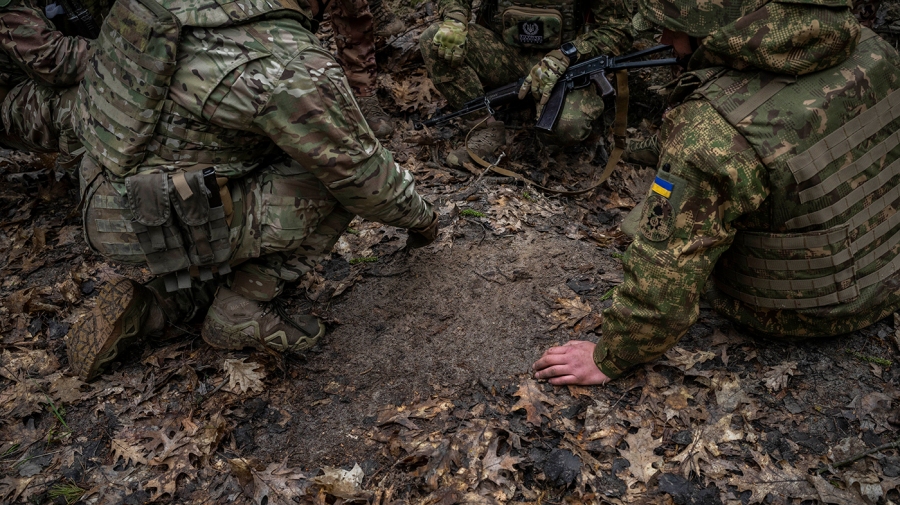Ukraine’s long-awaited counteroffensive is just around the corner, with top commanders and defense officials announcing Kyiv has nearly everything it needs to mount a successful attack on occupying Russian forces.
“Preparations are being finalized,” Ukrainian Defense Minister Oleksii Reznikov said at a news conference Friday, adding they were “mostly ready” for the offensive.
That followed remarks from NATO Secretary-General Jens Stoltenberg saying Ukraine is now in a “strong” position to retake occupied territory in the east after the bloc delivered 98 percent of promised combat vehicles to Ukraine, including some 1,550 armored vehicles and 230 tanks.
While the launch date of the offensive appears to be coming into focus, it’s unclear whether it will be as successful as previous Ukrainian operations.
Michael O’Hanlon, the director of research in foreign policy at the Brookings Institution, said even with the new armor, he had “modest” expectations for the offensive because of heavy Russian fortifications.
“Russia’s got a lot of antitank weapons and other multiple lines of fortification,” he said. “Ukraine’s got limited ability to provide air support for these incoming armored units and probably limited ability to sustain them as they move further away from their home bases of support.”
“So I don’t expect big breakthroughs, but I’d be happy to be proven wrong.”
The armor rolling into Ukraine includes Germany’s Leopard tanks, British-made Challenger tanks and infantry fighting vehicles from Western allies, such as the American-made Strykers and Bradleys.
Those are far more advanced than the Soviet-era heavy armor used by Ukraine during successful counteroffensives in Kharkiv and Kherson last year.
Ukraine has also received more MiG-29 fighter jets from allies like Poland, giving it a slight boost in air capability, though Kyiv remains heavily outmatched by Russia over the skies.
Christopher Cavoli, NATO’s supreme allied commander in Europe, told Senate Armed Services lawmakers on Thursday he is “very confident” Ukrainian troops have the military equipment they need for the offensive.
He said that Washington and Kyiv worked together to war-game and compile a list of needed weapons for the operation, which the United States pulled from its inventories and from those of allies over the past few months.
“We have fulfilled that. We have nearly gotten everything into Ukraine, and I am confident they have what they need for the offensive that we have planned with them,” Cavoli said.
But he also warned that critical parts of the Russian military remained intact — including cyber, nuclear, information operations and undersea warfare, such as submarines — despite months of heavy losses in Ukraine.
“Much of the Russian military has not been affected negatively by this conflict,” Cavoli said at an earlier Wednesday hearing with the House Armed Services Committee.
“We should not make the mistake of underestimating Russia’s military capabilities because the stakes of getting it wrong are too high,” added Celeste Wallander, the assistant secretary of defense for international security affairs, at the hearing.
Much of the recent fighting in Ukraine has been focused on the eastern frontlines around the industrial city of Bakhmut. But Ukraine is expected to launch its counteroffensive in the south as well.
Ukrainian forces have been observed setting up positions on the eastern side of Dnipro River, an area that could be used as a staging point for a move to recapture the Crimea Peninsula, according to the Institute for the Study of War.
Moscow is aware of the most likely place for Ukraine to strike — in the southern Zaporizhzhia region, where Kyiv would seek to cut off a land bridge to the Russian-occupied peninsula.
Russian military bloggers are casting doubt on the prospects for success of the counteroffensive, though they anticipate a huge operation.
Alexander Kots, a blogger with hundreds of thousands of subscribers, said “Kyiv will put all in” for the operation.
“Russian command has an understanding of the inevitability of the upcoming offensive,” he said. “A difficult period awaits us, during which the good news will be that the enemy has not been able to advance through our defensive formations.”
Leaked Pentagon documents suggest the U.S. is not confident Ukraine will make any significant gains soon, and a protracted war is likely to extend beyond 2023.
But Washington has underestimated Kyiv before, and Ukraine has the capabilities to slice through entrenched Russian positions, which are not very mobile, said O’Hanlon from Brookings.
“It is possible. It is possible to essentially go over some of these trenches,” he said. “Again, you’re [going to] take casualties and take losses as you do it, but it’s not as if a trench is somehow completely impregnable.”
O’Hanlon said trench lines can be overcome with bulldozers and explosives, referencing the U.S. Desert Storm operation in 1991 when American forces overwhelmed entrenched Iraqi positions in Kuwait.
Ukrainian savviness may also come into play. During the counteroffensive last fall, Ukraine duped Russia by hinting in public media reports it was going to strike in Kherson, but it instead went for Kharkiv.
It’s unclear whether Russia will fall for a similar head fake should Ukraine posit one ahead of the offensive.
But Ukraine’s Defense Ministry posted a statement on Telegram earlier this month suggesting its counteroffensive “plan is finally chosen in such a way that the enemy cannot react.”
“The Armed Forces are currently not preparing one thing — for a specific time in a specific direction,” the statement read. “The Armed Forces prepare the entire complex of defensive and counteroffensive measures every day.”

